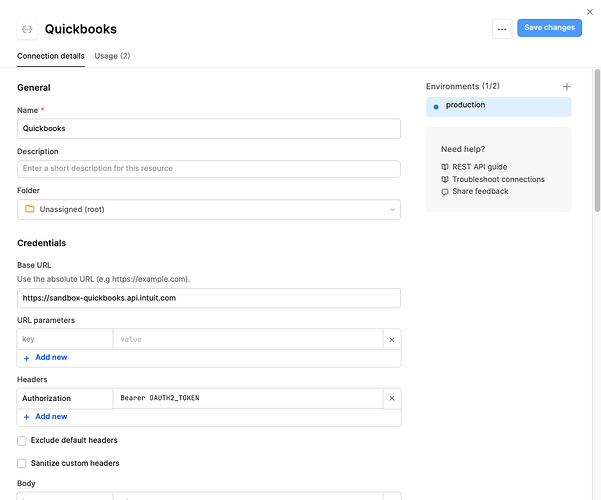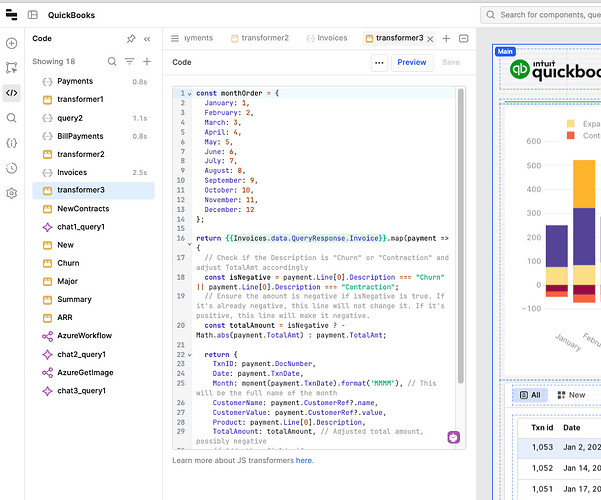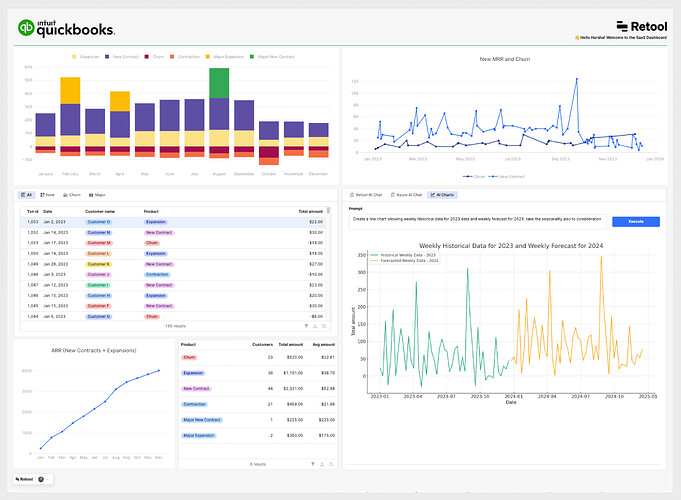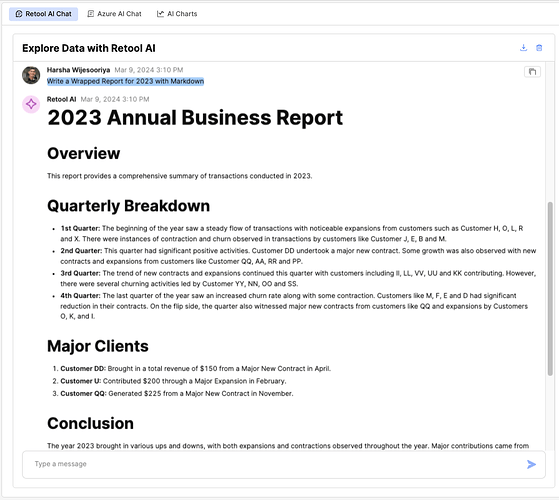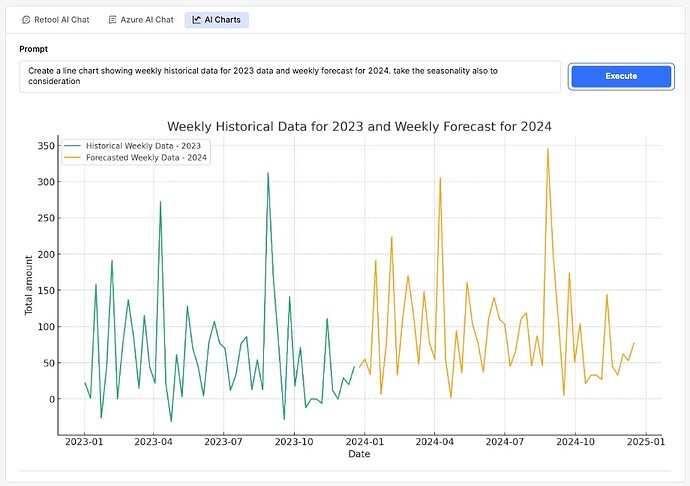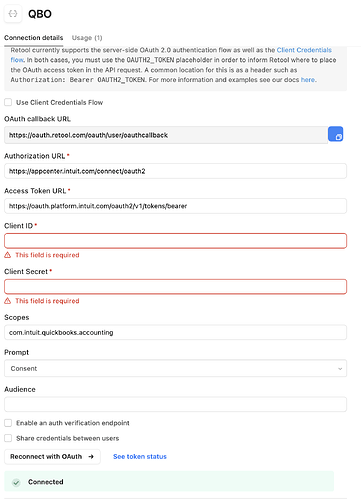The Experiment: Connecting QuickBooks to Retool. QuickBooks Online houses a wealth of financial data, from transactions and invoices to customer records and reports. Traditionally, accessing and leveraging this data outside the QuickBooks ecosystem required complex coding or manual extraction processes. However, with Retool, I was able to tap into this data seamlessly through its built-in support for REST APIs.
The integration process was remarkably straightforward, thanks to Retool's intuitive interface and comprehensive documentation. With just a few clicks, I could authenticate with QuickBooks Online and start querying data from various endpoints, such as customers, invoices, and payments.
Connecting my QuickBooks online data to Retool was a pivotal first step. What followed was a seamless process of data transformation, made effortless by Retool’s intuitive JavaScript-based data manipulation capabilities.
After implementing these data transformations, we're perfectly poised to create a range of dynamic data visualization components within our Retool canvas, bringing clarity and insight to our analytics.
Getting Retool AI and Azure AI into action
Unlocking Insights with AI One of the standout features of Retool is its seamless integration with AI capabilities. As part of my experiment, I leveraged Retool's built-in AI assistant to explore and analyze the QuickBooks data in new and insightful ways.
The AI assistant not only provided natural language querying capabilities, allowing me to ask questions about the data in plain English, but it also offered intelligent suggestions and insights based on the underlying data patterns. This AI-powered approach enabled me to uncover valuable insights that would have been difficult to uncover through traditional methods, such as identifying major customers, detecting anomalies, and forecasting future trends.
I noticed that Retool's built-in AI chat features were missing essential elements such as OpenAI's Assistants API functionalities like Code-Interpreter and Retrieval-Augmented Generation (RAG). This led me to initiate an AI Assistant via Azure's Assistants API, for which I developed a specialized workflow inside Retool.
This workflow operates bidirectionally. Firstly, it dispatches data from QuickBooks Online to the Azure Assistants API in CSV format. Secondly, it seamlessly retrieves the processed data back into Retool from Azure.
Utilizing the Azure Assistants API offers significant benefits. It empowers you to harness the robust capabilities of Python, Pandas DataFrames, and a suite of analytical tools, all at your fingertips for enhanced data management and analysis right inside Retool's intuitive interface.
The Results: A Powerful Demonstration of Retool's Capabilities Through this experiment, I was able to create a comprehensive dashboard that provided a real-time view of financial performance, customer behavior, and operational metrics from QuickBooks data. This visual representation not only highlighted the seamless integration between Retool and QuickBooks but also showcased the platform's ability to handle complex data sources and leverage AI for enhanced insights.
Quick Video of the final product in action
Thank you for reading my post. Your thoughts and feedback are invaluable to me, and I warmly invite you to share your reflections and suggestions.
@joeBumbaca - You can consider this as my entry for this week's Retool Madness challenge.
